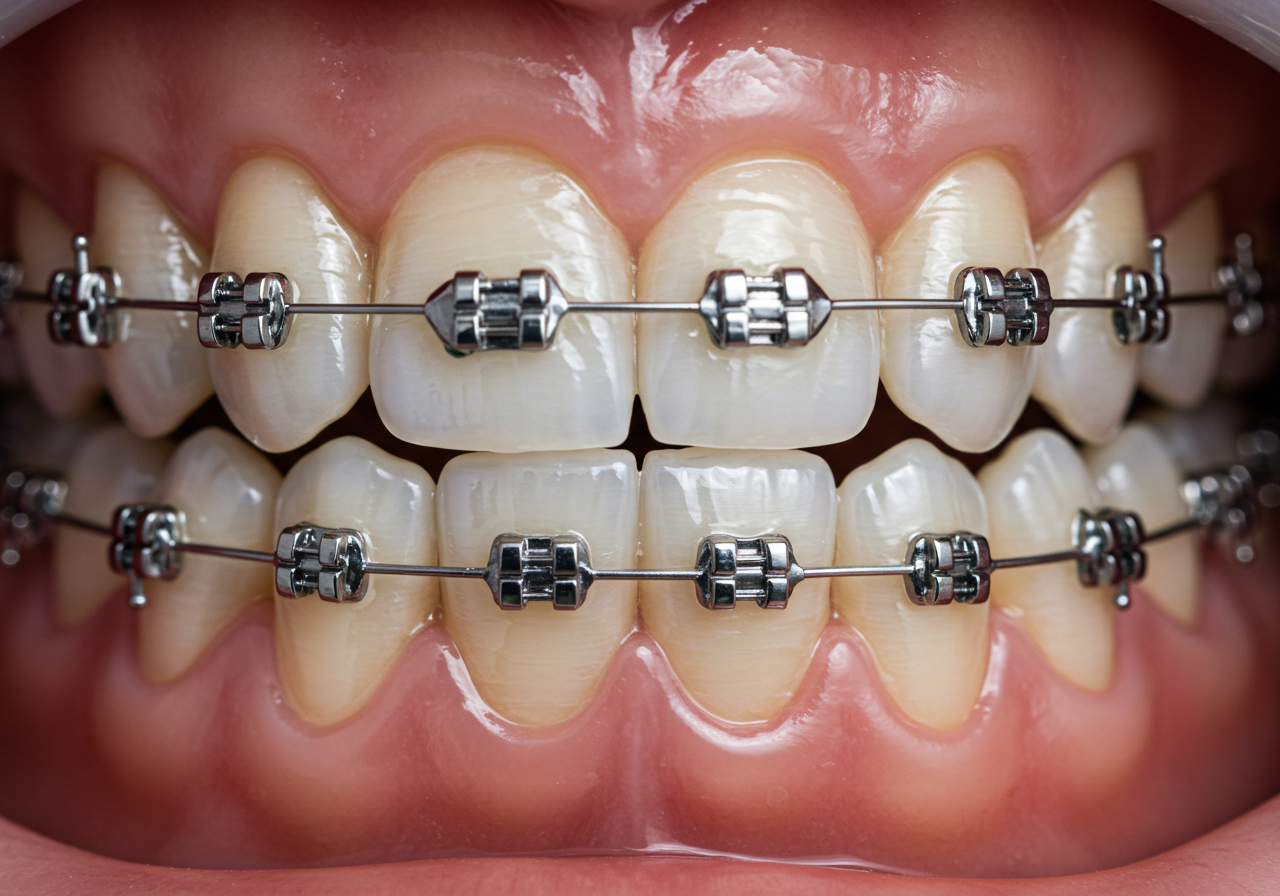
Traditional Braces
Traditional braces remain one of the most effective and reliable orthodontic treatments available. These time-tested appliances use brackets, wires, and bands to gradually move teeth into proper alignment, correcting a wide range of orthodontic issues from simple to complex.
How Traditional Braces Work
Traditional braces consist of brackets attached to each tooth, connected by a wire and secured with small elastic bands. The wire applies gentle, continuous pressure to move teeth into their proper positions over time. During regular adjustment appointments, our orthodontists tighten or replace the wires to continue the alignment process. This precise control allows us to address complex orthodontic issues that may not be treatable with other methods.
Modern Advances in Braces
Today's braces are smaller, more comfortable, and more attractive than ever before. Metal braces now feature smaller brackets and less noticeable profiles. We also offer ceramic braces that blend with your natural tooth color for a more discreet appearance. Self-ligating braces, which don't require elastic bands, can reduce friction and may require fewer adjustments. These advances have made traditional braces a more comfortable and aesthetically acceptable option for patients of all ages.
Benefits of Traditional Braces
Traditional braces offer several advantages over other orthodontic treatments. They're highly effective for treating complex alignment issues and can address problems that aligners cannot. They're also a fixed appliance, eliminating concerns about patient compliance. Traditional braces often work faster than removable aligners for certain corrections, potentially reducing overall treatment time. Additionally, they're typically more cost-effective than other orthodontic options, making them accessible to more patients.
Candidates for Traditional Braces
Traditional braces are suitable for patients of all ages, from children to adults. They're particularly effective for complex orthodontic issues such as severe overcrowding, significant bite problems, large gaps, or rotated teeth. For younger patients whose jaws are still developing, braces can be part of a two-phase treatment approach that addresses both dental alignment and skeletal growth issues. During your consultation, our orthodontists will determine if traditional braces are the right solution for your specific orthodontic needs.
Life with Braces
Adjusting to life with braces typically takes about a week. Initially, you may experience some discomfort as your teeth begin to move, but this can be managed with over-the-counter pain relievers. You'll need to be more diligent about oral hygiene, using special brushes and flossers to clean around brackets and wires. Certain foods should be avoided to prevent damage to your braces, including hard, sticky, or chewy items. Regular adjustment appointments every 4-6 weeks are necessary to ensure your treatment progresses as planned. Most patients wear braces for 18-24 months, though this varies based on individual needs.
Ready to Transform Your Smile?
Our team of orthodontic specialists is ready to help you achieve the smile you've always wanted. Contact us today to schedule a consultation and learn more about how traditional braces can benefit you.
Schedule a Consultation